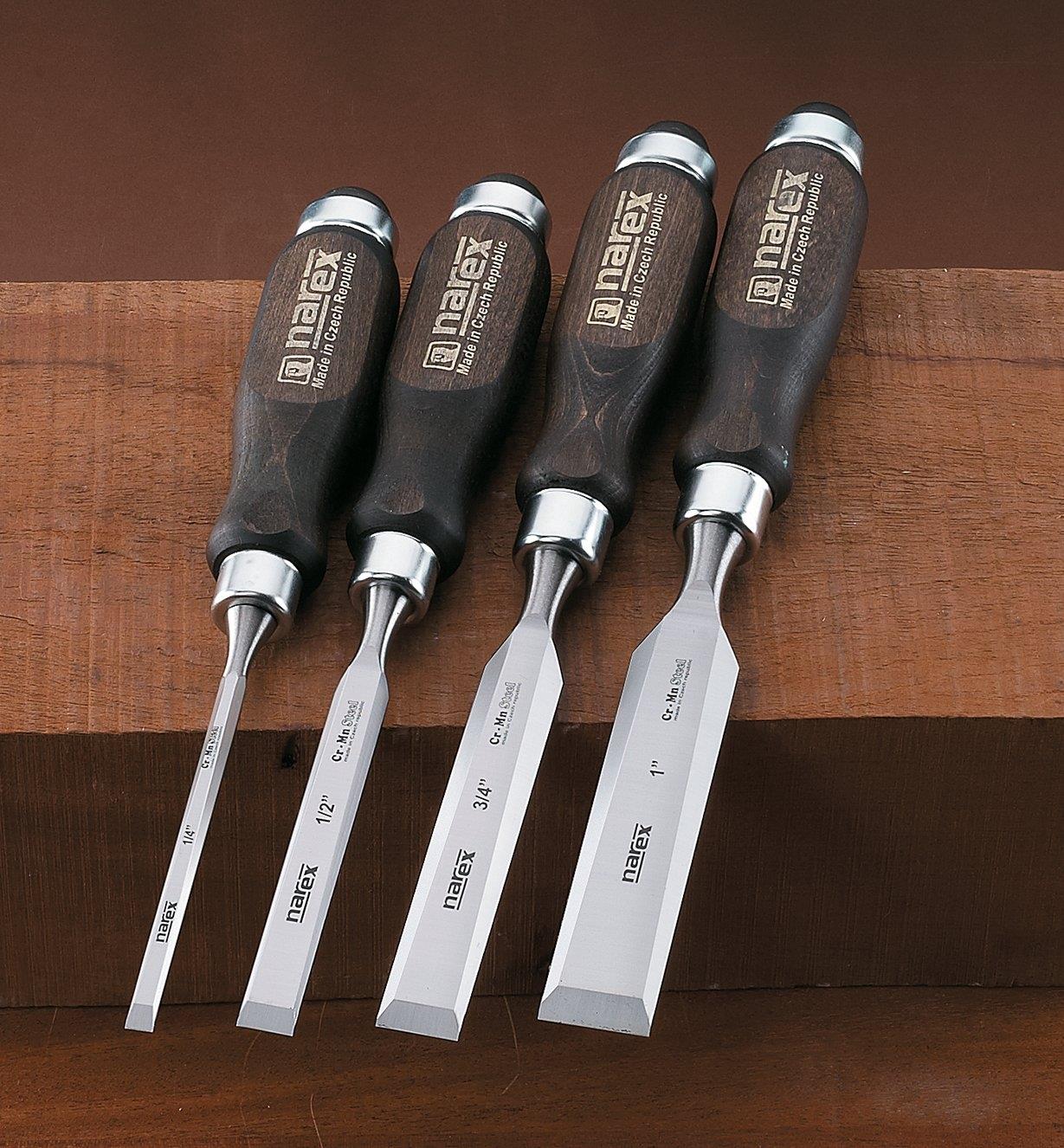I find it curious that this discussion of sharpening woodworking chisels has gotten this far without discussing what kind of chisels they are.
Tim seems like a guy who would own a basic set of bench chisels.
…cook at home and hobbyist woodworker. I tend to be a more traditional handwork kind of guy and like simple, less elaborate solutions when possible. I have a bunch of pocket knives, kitchen knives, as well as woodworking chisels, etc.
If he owned a set of laminated Japanese chisels, he would A) be telling us about them, and B) not have been sharpening them on a “tiny crappy little sharpening stone.”
He’s done a lot of reading, that’s good. So he’s not the total noob he claims, yet wants a good hands-on start. Also good.
Yes, he needs more chisels, you and I know that a world of chisels awaits him. He needs skews and cranknecks, mortisers and a big rockered slick, framers in small, medium and large. And Japanese hollow backs with brass strike rings like yours. Not to mention snicks, scorps and gouges.
But he doesn’t know all that yet. What he knows now is, that his crappy little pocket stone has narrow limits, and he’s bumping up against them.
My strong opinion is that an Eclipse jig on a larger stone or two is going to improve on what he’s been doing to his basic bench chisels for little money.
Is it the pinnacle of chisel sharpening technology? No. Will it help him do better at hobbyist woodworking? Yes, a dozen times yes. When he outgrows it, he will have gotten a big return on a small investment.
Framers and finish carpenters I meet on the job, I sharpen their chisels. If they show any interest in sharpening at all, I give them a stone and that jig to try out. Invariably the reaction is positive, sometimes fervently so.
It’s a cheap and simple upgrade, and that’s why I recommend it to Tim, without ever seeing his chisels.
Parker



